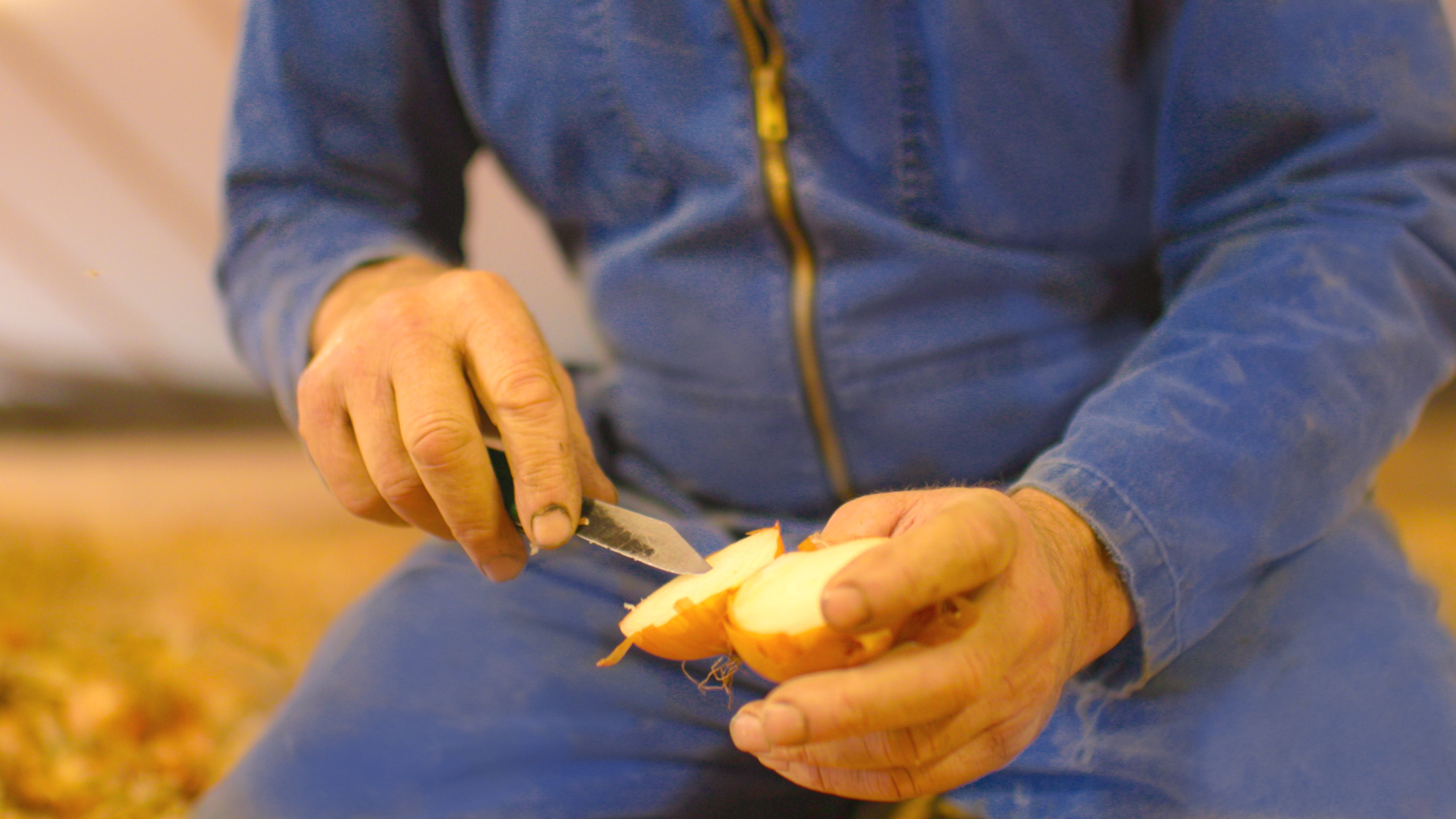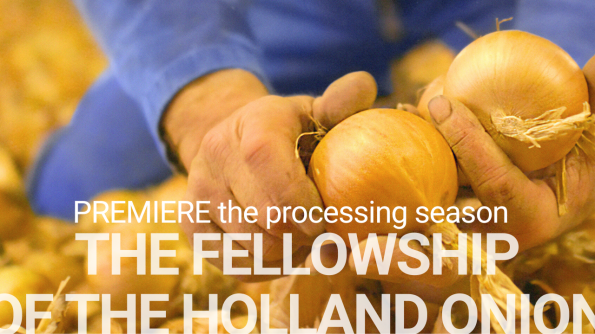premiering: the Processing Season
In the fifth part of our new video series The Fellowship of the Holland Onion, 'the Processing Season,' a silent transformation has occurred within the Dutch onion shed. Yet, following months of dormancy, the time has come for the next chapter in the life journey of the Holland Onion.
Through the lens of onion grower Co van den Dries we continue the narrative of the Holland Onions life journey. We witness the silent transformation that has unfolded over recent months. Once greenish bulbs, they now form a striking heap of golden-yellow onions, nestled in deep repose with crisp, dry goldenbrown skins.
But even with the onion harvest and stored behind the shelves, the vigilance of a Dutch grower endures. Every other day, he steps into the onion storage shed, tossing an onion onto the heap's rear. The distinct pop that follows assures him that his onions are still impeccably dry.
Following the initial weeks of intensive drying, preventing moisture from infiltrating the onions remains paramount. The presence of flies hovering above the heap or any unfamiliar odors serve as potential indicators. Moreover, if the relative humidity fails to stabilize around 70% post-drying, it warrants a thorough inspection.
The crackling sound emitted by the outer onion skins serves as a positive sign. However, in keeping with the practiced eye of an experienced onion grower, Co delves an arm's length deep into the onion stack to ensure uniformity. He takes a deep inhalation, discerning any hint of the dreaded fusarium scent, a sign of potential contamination. Methodically, he rolls an onion tail between his thumb and index finger, and given the prevalence of mold in the past summer, he also examines a few necks for signs of root rot.

A Dutch grower also routinely slices one of his onions. In instances of uncertainty regarding the drying process, he occasionally leaves a cut onion to assess later whether the rings have separated, indicating successful drying. However, excessive dryness is also undesirable, as it causes the Dutch onion to shed all its skins, a phenomenon known as "falling bald," resulting in a significant reduction in the final yield.
Final yield
The ultimate yield is determined at a critical juncture: during the taring process at the buyer's facility. The tare weight, representing the non-usable portion, is established as a fixed percentage of the total onion lot agreed upon between the grower and the processor. To ensure accurate taring, pre-sampling occurs at three specific moments during the unloading of a trailer batch of onions.
Extraction tare
The notion of extraction tare is a recent introduction. It encompasses all elements that are manually removed or sorted out, either by hand or via camera systems, during the processing phase. These may include onions lacking integrity, bare onions (exhibiting more than 10% of exposed fleshy skins), foreign objects, damage from frost or hail, underdeveloped onions, thick necks and seed stalks, sunburn, deformities (including bolting), damage caused by disease or pests, clods, and any other deviations not conforming to Class 2 standards.

After the final trailer of onions has been unloaded, onion grower Co arrives at the onion processor's yard. Together, they meticulously undergo the taring process. Setting the tare percentage at 3.8%, furthermore, Co is granted a fair and realistic price for his batch. His yellow onions align seamlessly with the quality ambition of the Holland Onion.
Watch the full story of the Processing Season right here!
Missed the earlier chapters of the Fellowship of the Holland Onion? Click here!
